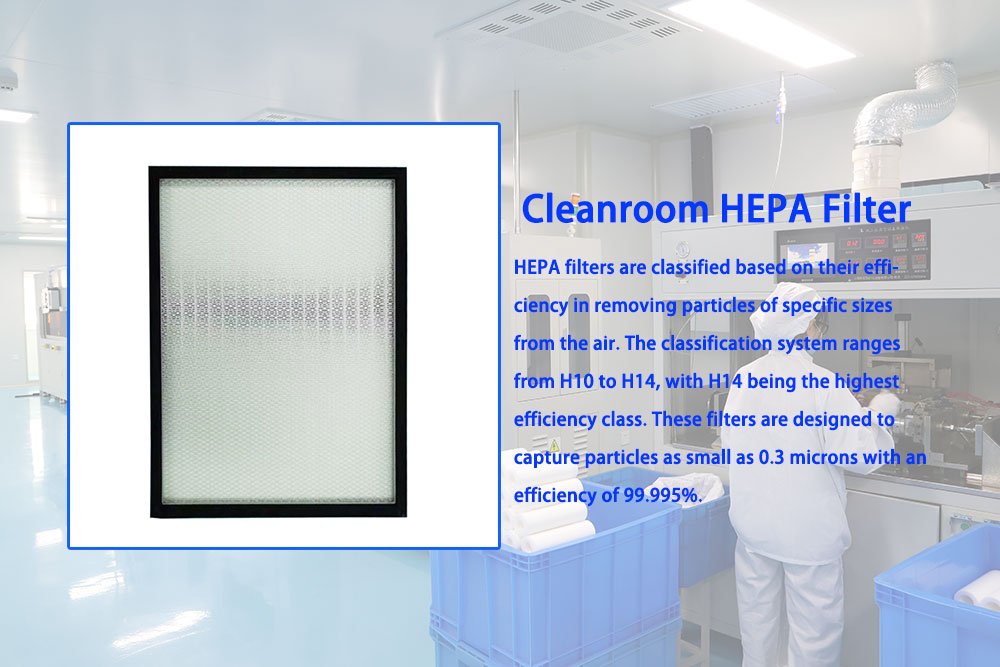 April 19, 2024
April 19, 2024
In the world of specialized manufacturing and scientific research, the significance of maintaining a contaminant-free environment cannot be overstressed. Whether it's in the production of semiconductor chips, pharmaceuticals, or in biotechnology research, the presence of airborne particles can lead to significant financial losses and compromise product integrity. This is where cleanroom filters come into play, serving as critical components in the creation and maintenance of cleanrooms. This article delves deep into the types of cleanroom filters, their functioning, and why they are indispensable in various industries.

What is a Cleanroom Filter?
A cleanroom filter is designed to remove contaminants such as dust, airborne microbes, and aerosol particles from the air, ensuring that the environment within a cleanroom meets the required cleanliness standards. These filters are essential for maintaining the stringent cleanliness levels as per the International Standards Organization (ISO) classifications, which define cleanrooms from ISO 1 to ISO 9 based on the number of particles allowed per cubic meter of air.
Types of Cleanroom Filters
HEPA Filters (High-Efficiency Particulate Air Filters):
HEPA filters are among the most common types of filters used in cleanrooms. They are capable of trapping 99.97% of particles that are 0.3 microns in diameter. The effectiveness of HEPA filters makes them suitable for industries where extremely high levels of air purity are essential, such as in pharmaceutical manufacturing or in settings where biological cleanliness is required.
ULPA Filters (Ultra Low Particulate Air Filters):
ULPA filters offer a higher level of filtration compared to HEPA filters. They can capture 99.999% of particles as small as 0.12 microns. These filters are typically used in situations where there is a need for an even greater level of cleanliness, such as in microelectronics manufacturing and critical biomedical applications.
How Do Cleanroom Filters Work?
The principle behind cleanroom filters involves intercepting airborne particles through a complex web of fibers. These fibers are arranged in a random pattern and are typically composed of materials like fiberglass. The air pushed through the filter experiences various mechanisms that trap particles:
Interception: Particles following a streamline in the air flow come within one radius of a fiber and adhere to it.
Impaction: Larger particles are unable to avoid fibers because of their inertia and are embedded directly into the fibers.
Diffusion: Small, sub-micron particles are diffused within the filter. This process is more effective at lower air flow velocities.
Installation and Maintenance
Installing and maintaining cleanroom filters requires meticulous planning and execution. The filters must be securely installed to avoid any air leaks that could allow unfiltered air into the cleanroom. Regular testing and replacement are critical to ensure that these filters continue to perform at optimal levels. Particle count tests are usually conducted to determine when a filter needs replacement.
Impact of Cleanroom Filters on Industries
The application of cleanroom filters extends beyond the pharmaceutical and semiconductor industries. They are also crucial in the food industry to prevent contamination during the packaging process, in aerospace for the production of satellite components, and in the automotive industry for the creation of electronic systems and high-performance engines. By ensuring the air quality, cleanroom filters indirectly influence product reliability, safety, and compliance with global standards.
Conclusion
Cleanroom filters are vital components in the management of controlled environments across various high-tech industries. By understanding the types of filters available, how they function, and their impact on industry, facilities can better design and maintain their cleanrooms to meet the strictest of cleanliness standards. As industries continue to evolve and demand greater precision, the role of cleanroom filters in ensuring product purity and safety becomes even more paramount.
In conclusion, while they might be hidden from view, cleanroom filters are indispensable in supporting the technological advancements and scientific breakthroughs that shape our modern world.

